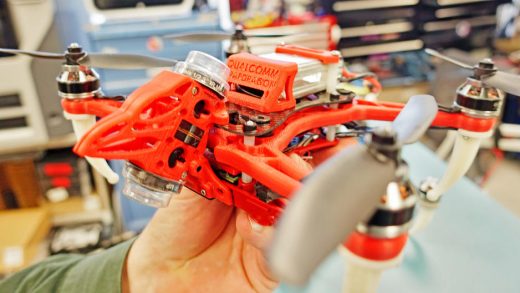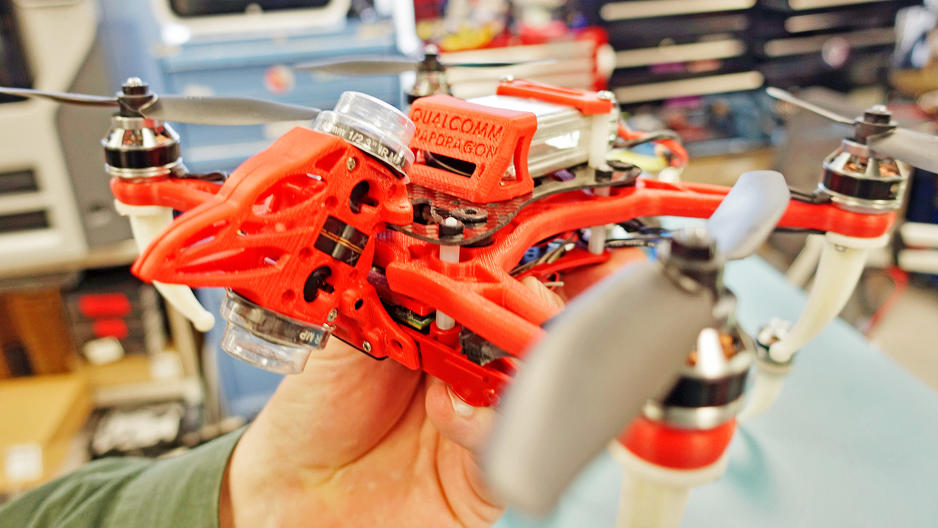The Everything Chip: Qualcomm’s Plan To Power Drones, VR, Cars, PCs, And More
Remember “Intel Inside”? The ad campaign transformed a maker of components for beige boxes into a top consumer brand two decades ago.
San Diego’s biggest tech employer, smartphone chip provider Qualcomm, is still a long way from matching Intel’s feat, both in name recognition and in revenue. But the company dreams of going much farther by being inside seemingly everything: smart cars, high-end fitness bands, VR headsets, smartwatches, AI systems, consumer and commercial drones, and internet-serving satellites. Qualcomm even thinks it can kick Intel out of PCs and server farms. It’s shelling out tens of billions of dollars to achieve its heady ambitions.
You might expect a flamboyant, aggressive CEO to be driving Qualcomm’s ballsy charge for world domination. That doesn’t describe my impression of the man sitting across from me in a spare conference room in early December, wearing jeans and a gray University of Michigan fleece (honoring the school where he got his masters degree in electrical engineering). Forty-seven years old, with bushy gray hair and smart looking, dark-rimmed glasses, Steve Mollenkopf has the quiet voice and cool demeanor of the engineer he is. Over 22 years, Mollenkopf worked his way up the ranks at Qualcomm and took over as CEO in March 2014.

It wasn’t an easy start. Qualcomm’s hot new smartphone processor, the Snapdragon 810, was a bit too hot, according to some reports that it overheated in phones such as the LG G Flex2 and HTC One M9. (Qualcomm insists the chip performs fine.) The Chinese government was pushing an antitrust case over what it considered Qualcomm’s excessive licensing fees for 3G and 4G cellular tech; and a big shareholder, hedge fund Jana Partners, was pushing to split the company in two—between its chip design and patent royalty divisions. And Taiwan’s MediaTek, though smaller than Qualcomm, is rising to challenge it in the smartphone chip market.
“I feel like this management team has been through a tremendous amount of major issues in a short period of time, probably faster than anyone I can think of,” Mollenkopf says, calmly. He’s leaning back in his chair with hands clasped around his knee. “We decided ultimately to do the biggest restructuring in the company’s history. Then at the same time, we also repositioned the company and really changed the narrative of the company.”
That narrative, in essence: Powerful processors and wireless connections are going to be in tens, perhaps even hundreds of billions of new devices, and Qualcomm wants to provide chips for as many of them as possible. That requires remaking the company and starting, sometimes from scratch, in businesses already dominated by rivals. It wouldn’t be the first time for Qualcomm to charge into industries it seems to have no business being in.
Instead of splitting, Qualcomm is swelling, buying over $50 billion worth of companies since Mollenkopf became CEO, including a pending $47 billion deal for Dutch chipmaker NXP. The tie-up will likely more than double Qualcomm’s staff (even after some layoffs that Mollenkopf says will come) and extend its reach to cars, medical devices, home automation, wireless payments, and unsexy-but-important machines like point-of-sale terminals at store checkouts. In China, Qualcomm got back in business by paying a $975 million settlement and adjusting licensing fees. (However, a South Korean investigation recently charged anticompetitive practices that may result in an $865 million fine.)
But even as Qualcomm takes on new challenges, Mollenkopf has been jettisoning projects that weren’t clearly connected to its core chipmaking business, such as augmented-reality software platform Vuforia, which it sold in 2015. (A mural celebrating Vuforia still covered the side of a Qualcomm warehouse when I visited.) Altogether, the company has cut $1.4 billion in annual expenses, along with about 1,700 jobs.
Smartphones And Beyond
With the great big exception of Apple (which designs its own chips for iOS devices), Qualcomm dominates the high-end phone universe. Its top Snapdragon chips power flagship Android smartphones like the new Google Pixel, the HTC 10, Moto Z, and even many of Samsung’s Galaxy S7 line, as well as the exploding Note 7. (Samsung uses both Qualcomm’s and its own Exynos chips). Qualcomm also makes a fortune—likely about two thirds of its profits—from other people’s chips through licensing fees on the cellular technologies it has developed. These include the CDMA wireless standard that powered 2G and 3G Verizon and Sprint phones for two decades, much of the 4G technology in phones around the world today, and—Qualcomm hopes—technologies that will get incorporated into the insanely fast 5G standard coming on line in the next four years.
Like Apple, Qualcomm designs chips and hires other companies, such as Samsung, to make them. Intel and Samsung have to worry about reconfiguring their factories and having enough demand to keep them busy before they can introduce new chips. Qualcomm and Apple just pick whatever factory provides the best deal. “We don’t care exactly how full Samsung’s fab is. We let them worry about it,” says Keith Kressin, Qualcomm’s senior VP for product management. Jumping between manufacturers has allowed Qualcomm to shrink its chips four years in a row. The upcoming Snapdragon 835 is 35% smaller and uses 25% less power than last year’s top chips, the 820 and 821. (In buying NXP, however, Qualcomm will now own some chip factories.)
Dominating one industry is no guarantee for the future. Intel owns the PC (and Mac) and server businesses, but its smartphone and tablet plans flopped. “I think Intel’s sin was that they didn’t listen to what Apple wanted,” says Forrester Research analyst Frank Gillett. “They said, ‘Here’s what we have. Want some?'” Intel tried to wedge its processors, based on its design technology called x86, into mobile devices. But the mobile industry was using a chip type created by a British company called ARM. In the mobile market, everyone but Intel, including Qualcomm, builds ARM-based chips—the platform for iOS, Android, and the floundering mobile version of Windows.
The phone business is still growing, especially in developing countries, but more slowly than it had been—in single-digit vs. double-digit percentages each year, according to market research firm Gartner. Qualcomm and other chip companies hope that gangbuster growth reminiscent of the go-go smartphone years will come for all those newly connected machines—clumped into a catch-all category called IoT, the internet of things.
Mollenkopf believes that Qualcomm’s smartphone chips will be perfect for all these new devices and even for the “cloud” of server farms that hold the IoT together. In every new category, it faces competition: Intel, for instance, is challenging Qualcomm on just about every front, such as drones, virtual reality, cars, and 5G wireless. And Qualcomm is way behind other companies on some fronts, like Nvidia for smart and autonomous cars.
Not The Same Kind Of Sea Change
As it tackles all these new markets, Qualcomm has to avoid the peril Intel met with phones: failing to convince customers that what it’s selling, Snapdragon, is perfect for whatever they are looking to buy. But Mollenkopf dismisses the Intel parable: “Almost every other transition that people talk about—PC-to-smartphone, for example—it was a big technology change. What you had to be good at changed dramatically.” Mollenkopf claims that’s not the case today: The trend toward ever-smaller and more energy-efficient chips that phones engendered dovetails into the needs for other connected gadgets. “It’s all really being disrupted by communication and low-power computing and the synthesis of many different technologies together,” he says.
A big part of this trend is the SoC—system on chip. A phone’s CPU, graphics, modem, Wi-Fi, Bluetooth, and other components, now including artificial-intelligence engines, are squeezed into a single chip to save space, money, and power, while boosting speeds (with shorter distances for electrons to travel). Those are benefits for any device. “You can use the [technology] roadmap from cellular to really help out automotive and internet of things,” says Mollenkopf. Qualcomm’s rivals also build SoCs.

In San Diego, I visit a lab full of consumer drone prototypes. About a half dozen 3D-printed models sit on a workbench; a few steps away, engineers test image-stabilizing algorithms for drone-mounted cameras. The drones run on the Snapdragon 801 SoC, Qualcomm’s top smartphone chip from 2014. Qualcomm has to build working models of drones, headsets, and other products to figure out elements like software needed to make its phone chips work in them, says Raj Talluri, who runs Qualcomm’s IoT division. Only then can it pitch the chips to companies making the devices.
The $599 Hover Camera Passport drone, from Chinese company Zero Zero Robotics, is in a growing category of selfie drones that can hover steadily in front of people, able to recognize and lock onto faces to take photos, and even follow people as they move about. Most drones don’t run on Snapdragon, yet they can be quite sophisticated. The Phantom 4 and Mavic Pro drones from Chinese drone maker DJI use the Myriad 2 machine-vision chip from a startup called Movidius (now owned by Intel) to rapidly recognize people it’s following or to map a safe flight path over rough terrain.
Qualcomm is making some progress: Tencent, Zerotech, Pegatron, Nine Eagles, and Sunly have announced plans to build drones on the Snapdragon Flight chips-and-software platform. Those aren’t household names, but the business is wide open. “There aren’t any dominant chipmakers in the drone market, as it’s still very fragmented,” says Gartner analyst Mark Hung.
Part of Qualcomm’s pitch is that the same Snapdragon capabilities can serve many types of products. The Snapdragon VR820, Qualcomm’s prototype VR headset, is powered by a built-in 820 chip. That makes it self-contained, in contrast to headsets that rely on a tethered computer, like Facebook’s Oculus Rift and the HTC Vive, and those that make you snap in a smartphone, including the Samsung Gear VR and Google Daydream View.

With a camera on the front of the VR820 headset, the same image recognition that a drone uses to spot and avoid obstacles can also reference nearby objects to figure out where someone wearing the headset is and how far they move. The technology can also recognize and transpose real-world hand movements into the virtual world. Trying it out, I could not only look up and down or side to side; I could also step toward or away from 3D characters, which appear closer or farther as I move, and look above or underneath them. Most other VR systems require external devices like infrared beacons around the room in order to track the wearer, and they require holding controllers to read hand movement.
As with drones, Qualcomm wants others to make their own headsets based on the VR820 design. Chinese companies Coocaa, Focalmax, Pico, and Whaley have announced plans to build VR820 headsets, all for the Chinese market.
Once again, Intel is right there. In August 2016, it showed off a very similar headset design called Project Alloy, including the same type of movement tracking. But Intel is a bit behind: It won’t have the developer kits until the spring, and no one has committed to using the tech in consumer products. No matter how good the technology, both chipmakers will have a challenge breaking into an already crowded market.
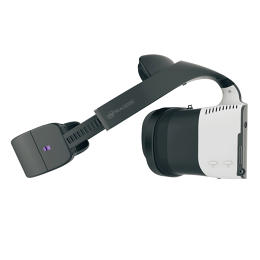
Qualcomm is jumping into a market that’s in its infancy even compared to VR: mixed-reality glasses that superimpose a screen over the wearer’s view of the world. San Francisco-based Osterhout Design Group will put the new Snapdragon 835 in its R-8 and R-9 “smartglasses.” They promise to actually do what people expected of Google Glass—blend the real and online worlds together in one view.
Mollenkopf doesn’t get overly exuberant about drones, VR, and other “high-complexity, smartphone-like” consumer gadgets, as he calls them. These are, “things that people believe generally will happen,” he says. “They don’t know when. They are interested in them. They’re wondering whether it’s going to be the new smartphone or the new iPod or whatever.”

In more mature markets as well as emerging ones, Qualcomm is betting that ever more connected gadgets will require ever-more powerful processors. Take fitness trackers: The iconic Fitbits run on fairly low-end chips, called microcontrollers, typically made by STMicroelectronics. Qualcomm is an investor in Fitbit, though, and many other companies that it’s banking will require more powerful chips. “We invest in companies that could be future partners or customers of Qualcomm. They don’t have to use our silicon today,” says Patrick Eggen, who manages the company’s investment arm, Qualcomm Ventures, in the North America. It’s invested hundreds of millions of dollars (the company doesn’t reveal specific numbers) in startups pushing technologies that Qualcomm wants to get into, including drones, virtual reality, augmented reality, medical devices, and even satellites.
Fitness trackers are getting more complex and resembling smartwatches, which have cellphone-like capabilities. (Polar’s new fitness tracker, the M600, runs Google’s Android Wear smartphone OS, though not on a Snapdragon chip.) “What started out as a simple job of tracking your steps…the expectation is increasing,” says Talluri, mentioning features like touch screens. Qualcomm does provide Snapdragons to about a dozen smartwatches, including from Asus, Fossil, Huawei, LG, Michael Kors, and Samsung. All other brands are tiny compared to Apple’s share of the market, though, and even the Apple Watch isn’t an iPhone-like phenom.
Maybe Qualcomm’s steepest uphill battle is for PCs—hardly machines of the future, but still a giant business. In December, Microsoft and Qualcomm announced a version of Windows that will work on the ARM-based chips that Qualcomm makes, and will be able to run all current Windows applications. (Microsoft’s earlier attempt to put Windows on the ARM chips in some of its Surface tablets flopped because it couldn’t run older apps.)
“If you’re [a company] that makes a high-end smartphone, then you have the process and technology to manufacture a thin laptop,” says Matt Grob, Qualcomm’s CTO. Like Mollenkopf, Grob is a longtime Qualcomm engineer, with 25 years at the company and 59 patents. Stocky, with dark hair, he’s very soft-spoken, sometimes nearly whispering. “You can think of it like a smartphone with a laptop-size battery… so the battery life will be tremendous,” he says. No one has announced plans to build Qualcomm PCs, but Grob says to expect ultra-thin, low-cost laptops by the end of 2017.
Qualcomm is making the same kind of pitch for the server business—that its chips are smaller, cheaper, and more energy-efficient than Intel’s. On the surface, Qualcomm’s dream to push its incompatible chips into servers looks as fraught as Intel’s attempt to get its incompatible chips into phones. “We got strong feedback five years ago to not try this,” admits Grob. But a lot has changed, argues Gartner’s Mark Hung. Internet giants like Google, Amazon, and Facebook are custom-building hardware and software for their server farms, and they might be up for trying new technologies, he says.
Driving Ambitions
Starting from the smallest consumer gadgets, Qualcomm now wants to increase its stake in the biggest: cars. Modern cars are packed with sensors and processors, and NXP makes scores of them: antilock brake controllers, tire pressure sensors, temperature sensors, accelerometers, radio tuners, Ethernet switches, keyless entry systems, and a lot more. Chipmaker CSR, which Qualcomm picked up in 2015 for $2.4 billion, also makes automotive components like Bluetooth and GPS chips. They provide the foundation that Qualcomm can top off with a Snapdragon chip. “We’re good at all the non-car pieces that are going into the car and really changing how the car is architected, but we’re not good at the car pieces,” says Mollenkopf.
Already, Qualcomm has sold over 340 million chips to over 20 carmakers, things like modems and other wireless components. It’s still getting up to speed with smart cars, which started with “infotainment” systems. They power both navigation and entertainment features like streaming audio apps and Bluetooth connections to cellphones—platforms like Ford Sync, Apple Car Play, and Android Auto. Now smart cars are evolving into autonomous cars.
Nvidia, which crashed and burned trying to get into cellphones, has been a lot smarter with cars. Its Tegra chips—which, like Qualcomm’s Snapdragons, incorporate ARM technology—power the infotainment systems in cars from Audi, BMW, and Honda. Its autonomous car “supercomputer,” the Drive PX 2, was picked by Tesla, which will use it to control its self-driving cars in the future. At this year’s CES, Nvidia announced deals to put Drive PX 2 in Audi cars starting in 2020 and to co-develop an AI-powered car with Mercedes-Benz.
As almost always, Intel is competing with Qualcomm here. Its Atom processors, which flopped in smartphones, are getting a second chance in car infotainment, already installed in 30 models. Intel also just announced its own autonomous car project, using both Atom and more powerful chips, called Intel GO. BMW is partnering with Intel on developing self-driving car tech, and the automaker strongly hinted that Intel GO will make its way into its iNEXT project for an electric, semi-autonomous car set to hit the road in 2021.
In San Diego, I saw some concept cars Qualcomm was getting ready to show off at CES in early January. The star would be a Maserati Quattroporte gutted and rebuilt with Qualcomm chips packed inside. Qualcomm’s infotainment chip, the 820A, powers features like safety cameras, GPS, and voice commands. Bluetooth chips embedded throughout the car don’t just connect riders’ cellphones; together with microphones, they track who is in the car, and where. (Only the person in the driver’s seat has full control through voice commands.)
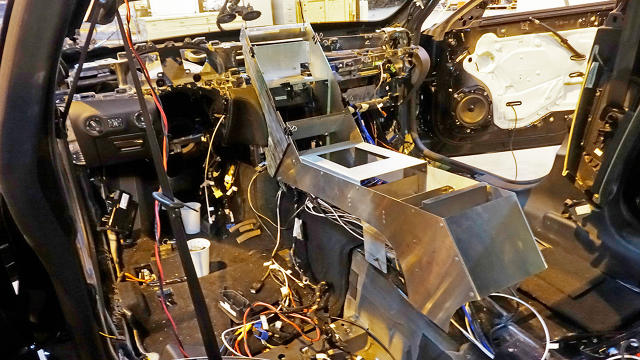
Qualcomm doesn’t have a deal with Maserati; it just bought a car and tricked it out, including reverse-engineering Maserati’s engine computer system—showing what it could do for companies if it can convince them to pair up. (It did similar with a Cadillac.) That is starting to happen. Audi’s 2017 cars will run on Snapdragons, and at CES, Qualcomm announced a similar deal for Volkswagens starting in 2019.
Automotive is another example of the hopeful, long-game approach. So far, Qualcomm barely registers in the autonomous-car market, but Qualcomm Ventures has been investing in companies that it hopes will build that market. One of them is Cruise, a San Francisco startup that makes sensors for autonomous cars. GM bought Cruise for about $1 billion in 2016 and is using the tech on the Chevy Bolt autonomous cars it’s testing on the streets of San Francisco. Qualcomm is starting a research program in Germany that could develop technologies for autonomous cars, but it’s far from having a platform as Intel and Nvidia do.
Qualcomm has been building the artificial intelligence it will need for self-driving cars, drones, and other futuristic machines. In 2016, it added to its Snapdragon 820 smartphone chip a neural network capability called Zeroth, a name inspired by Isaac Asimov’s robot laws. After the science-fiction legend created his first, second, and third laws about how robots should behave, he added a new law, called the Zeroth, to precede them all—that a robot may not harm humanity. “We found that no one had trademarked it or even knew what it was. It was perfect!” says Grob. Qualcomm later decided the term was a bit esoteric, though, and it settled on the sedate “Qualcomm Machine Learning Platform.”
The Sky Might Not Be The Limit
Wireless is where Qualcomm made its fortune. And no matter which new tech categories matter most in the future, it will remain mission-critical for Qualcomm. The company got lucky with its first invention, called code division multiple access—CDMA. The technology allows cellphone towers to transmit multiple calls at once by assigning each call its own encryption code. The phones on the other end decrypt only the data packets meant for their call. CDMA challenged the prevailing technology, called GSM, which instead divided calls by assigning bits of each one into tiny time slots. Most of the world stayed with GSM, in part because it was a free, open standard. Qualcomm owned CDMA technology and charged licensing fees. But Sprint, Verizon, and a smattering of other companies around the world opted for CDMA, and Qualcomm got rich on the fees.
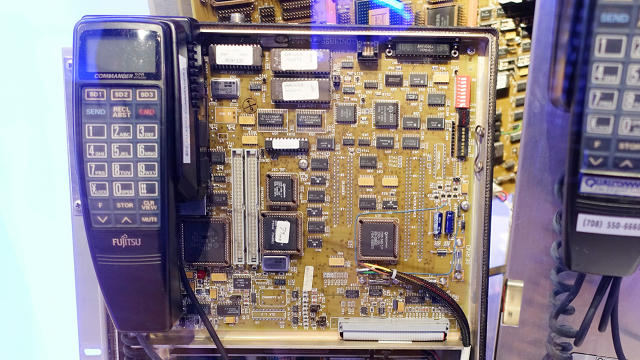
Qualcomm then bought up rights to a technology called OFDM that formed the basis of 4G wireless (and will for 5G, too), and the world paid Qualcomm licensing fees. LTE has come very far since it was introduced with a maximum speed of about 12Mbps back in 2010. As speeds grew, so did the name; the latest version, called LTE Advanced Pro, will have a top speed just shy of a gigabit per second and be in Qualcomm’s new Snapdragon 835 and its platform for smart cars.
Many of the tricks that went into that speed explosion, like combining five or more signals to carry more data, will be the foundation of 5G. “It’s still based on OFDM. Patent-wise, Qualcomm…is still a significant player,” says Akshay Sharma, who tracks wireless tech for Gartner.
5G’s final form will come from collaborations between many companies in an international standards body (called 3GPP). But Qualcomm is trying to assure a big role through facts on the ground. In October, it came out with the first 5G chip, the X50 modem, even though the standard won’t be fully baked till likely some time in 2018. The X50 is designed for trials, so gadget makers and networks can get a sense of which technology ideas work and which ones don’t. In the process, they will get used to Qualcomm’s 5G technologies—maybe improving the chances that its royalty-earning technologies make it into the 5G standard. Guess who’s right behind? Intel, which launched its own chip, simply called “5G Modem,” at CES, saying it will be ready for tests in late 2017.
Qualcomm’s plans go above the atmosphere to OneWeb, a project to blanket the Earth with internet access using a fleet of 648 small, mass-produced satellites. Paul Jacobs, Qualcomm’s chairman and Mollenkopf’s predecessor as CEO, serves on the OneWeb board along with Richard Branson and tech captains like Airbus CEO Thomas Enders and SoftBank chairman Ronald Fisher. “It’s one of our bigger projects,” says Grob.
Qualcomm’s cellular modems will be in the solar-powered ground stations that connect to the satellites and link in devices on the ground through Wi-Fi and small cellular networks. Qualcomm also designed the antenna systems throughout, from base stations to satellites, and its modems will likely be in the second-generation of spacecraft, says OneWeb. The satellites, expected to launch beginning in 2018, will also provide internet connections to planes, cars, and ships. Altogether, OneWeb could potentially bring Qualcomm billions of new customers.
A Dash Of Hubris
However all its plans turn out, Qualcomm has already succeeded at one thing: being really ambitious. Some schemes, such as getting into mobile gear like VR headsets, seem like a natural expansion from phones. Others, like tangling with Intel on PCs and servers, seem almost cheeky. But being cheeky has served Qualcomm well in the past.
In 1993, the company, which at the time made satellite-connected text-messaging machines for truckers, crashed the cellphone party. A novice in the burgeoning field, it had the hubris to say that its new technology, incompatible with everyone else’s, was better and that people should pay extra to license it. Enough companies did. Now Qualcomm is a giant in 4G, and its prospects for 5G are strong.
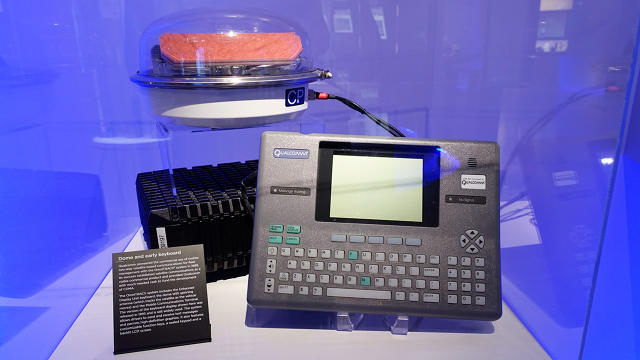
In 2007, when Snapdragon debuted, Qualcomm was a nobody in the phone processor business. “I can remember sitting back in the mid-2000s timeframe and people said, “Yeah, you’re good at the modem but you’ll never, ever have a position in the smartphone,’ because smartphones are all about—just name your technology—it’s about CPU, it’s about GPU, it’s multimedia,” says Mollenkopf. “We’re number one in all those things today.”
Being daring also means making mistakes. One of them was Mirasol, an almost-impossible-to-explain display technology that promised LCD-like color image quality with E Ink-like power savings. (Pixels reflect ambient light and use power only when the image changes, instead of constantly refreshing, as LCDs, OLEDs, and other displays do.) Despite the promise, Mirasol never made it.
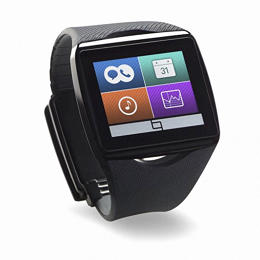
Qualcomm tried to keep Mirasol alive by using it in its own smartwatch brand, called Toq. Introduced in 2013, Toq never caught on, either. “It was so cool we maybe made a mistake and decided to sell it commercially, and it was not a good idea,” says Jim Merrick, the director of marketing. “We don’t make commercial products.”
With Mirasol, Qualcomm also broke with tradition by having its own factory, a Taiwan facility it sold in 2014. It didn’t sell the technology, though. (Reports say that Apple is now developing display technology at the factory.)
In all my conversations with people at Qualcomm, they didn’t shy away from admitting to failures—neither getting defensive nor wallowing in mea culpas. “Qualcomm doesn’t get real amped up in the high points. It doesn’t get real low in the low points,” Mollenkopf says.
Qualcomm’s low-key leadership over the years isn’t a sign of timidity. As engineers, Mollenkopf, Grob, and their predecessors have the kind of quiet confidence from looking at the problem and doing the math. Sometimes that means admitting that the numbers don’t add up. “We have the ability to change ourselves when we need to change ourselves, and a track record of doing it,” says Mollenkopf.
Fast Company , Read Full Story
(30)

